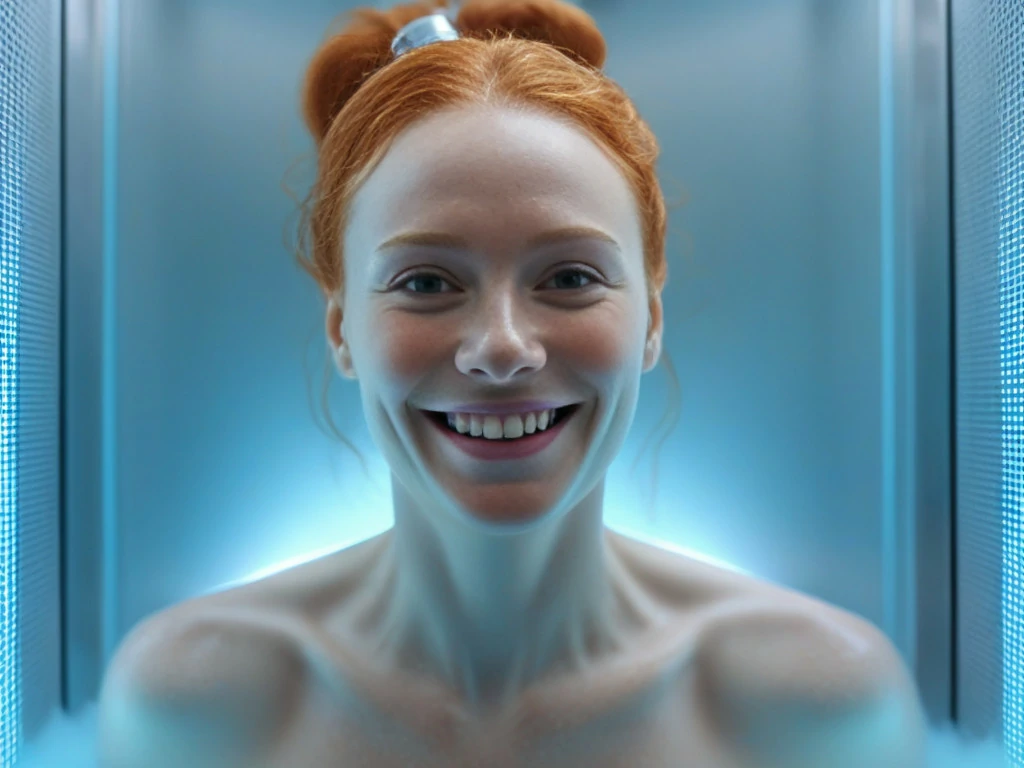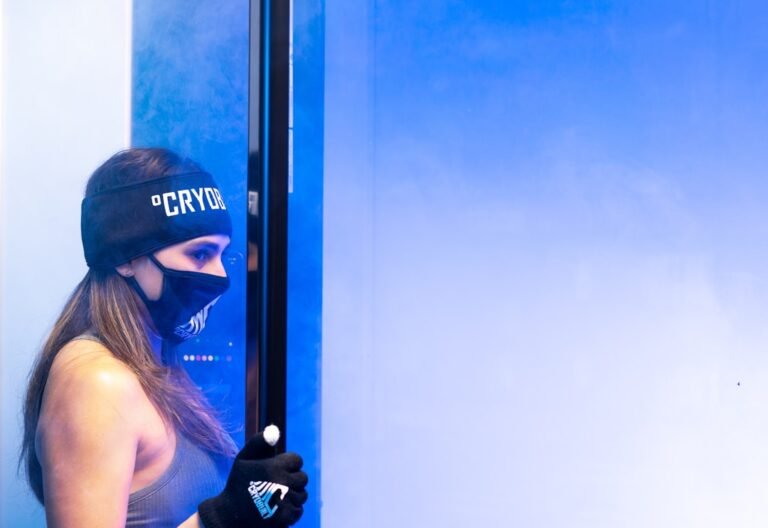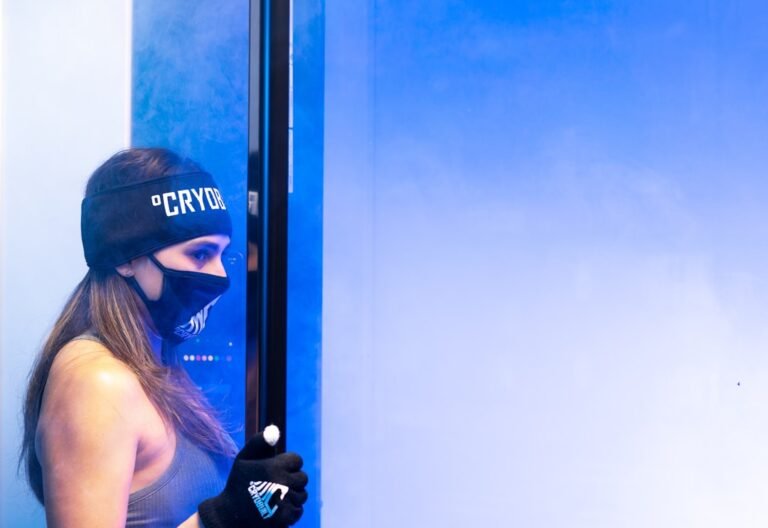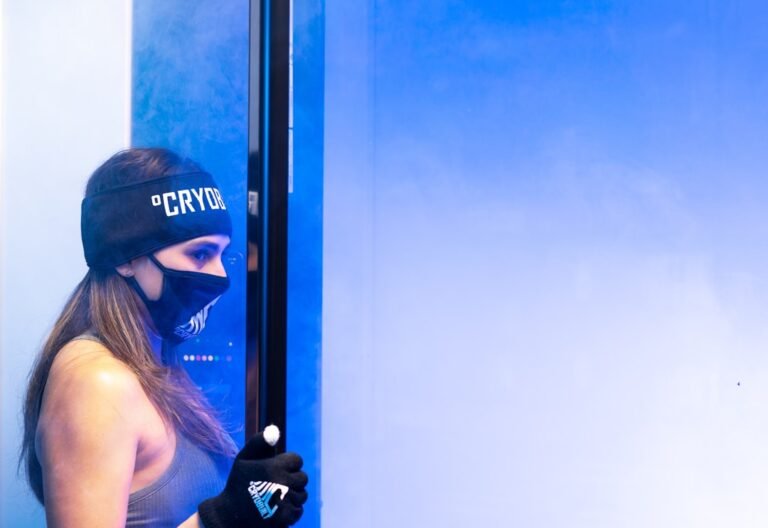The Language of Cold: How Cryotherapy Terms are Used in London’s Winter Sports Scene

Cryotherapy is a popular treatment that has gained attention in recent years for its potential health benefits. It involves exposing the body to extremely cold temperatures for a short period of time, typically in a cryotherapy chamber or through localized treatments. Understanding the language and science behind cryotherapy is important for anyone considering this treatment, as it can help to demystify the process and ensure that individuals are making informed decisions about their health.
Summary
- Cryotherapy involves exposing the body to extreme cold temperatures for therapeutic purposes.
- Cryotherapy can benefit athletes by reducing inflammation, improving recovery time, and enhancing performance.
- Popular cryotherapy terms used by London’s winter sports enthusiasts include “cryo-chamber,” “cryo-sauna,” and “cryo-facial.”
- Cryotherapy can play a role in injury prevention and recovery by reducing pain and swelling and promoting healing.
- There are different types of cryotherapy techniques, including whole-body cryotherapy, localized cryotherapy, and cryofacials.
Understanding the Language of Cryotherapy: A Beginner’s Guide
Cryotherapy is derived from the Greek words “cryo” meaning cold and “therapy” meaning treatment. It is defined as the use of extremely low temperatures to treat various conditions and promote overall wellness. Common terms used in cryotherapy include cryochamber, cryofacial, and localized cryotherapy. A cryochamber is a large chamber or room that is cooled to subzero temperatures, typically using liquid nitrogen. Cryofacial refers to the application of cold temperatures to the face and neck area, often using a handheld device. Localized cryotherapy involves targeting specific areas of the body with cold temperatures, such as using ice packs or cold compresses.
The science behind cryotherapy lies in its ability to constrict blood vessels and reduce inflammation. When the body is exposed to extreme cold, blood vessels constrict in order to conserve heat and protect vital organs. This process can help to reduce inflammation and swelling, which can be beneficial for athletes recovering from injuries or individuals with chronic pain conditions.
The Science Behind Cryotherapy and Its Benefits for Athletes
Cryotherapy has gained popularity among athletes due to its potential benefits for performance enhancement and injury recovery. When the body is exposed to extreme cold temperatures, it triggers a response known as vasoconstriction, which causes blood vessels to narrow. This can help to reduce inflammation and swelling, which are common after intense physical activity or injury.
In addition to reducing inflammation, cryotherapy can also help to increase blood flow and oxygen delivery to the muscles. This can aid in the removal of metabolic waste products, such as lactic acid, which can build up during exercise and contribute to muscle soreness and fatigue.
Several studies have been conducted on the effects of cryotherapy on athletic performance and recovery. One study published in the Journal of Athletic Training found that cryotherapy was effective in reducing muscle soreness and improving recovery following intense exercise. Another study published in the Journal of Strength and Conditioning Research found that cryotherapy was effective in reducing inflammation and improving muscle function in athletes recovering from knee surgery.
Popular Cryotherapy Terms Used by London’s Winter Sports Enthusiasts
London’s winter sports community has its own set of terms and phrases related to cryotherapy. Some common terms include “ice bath,” “cryochamber,” and “cryofacial.” An ice bath refers to immersing the body in cold water, typically with ice added, to reduce inflammation and promote recovery. A cryochamber is a large chamber or room that is cooled to subzero temperatures, often using liquid nitrogen. Cryofacial refers to the application of cold temperatures to the face and neck area, often using a handheld device.
The Role of Cryotherapy in Injury Prevention and Recovery
Cryotherapy can play a significant role in injury prevention and recovery for athletes. By reducing inflammation and swelling, cryotherapy can help to prevent injuries by promoting faster recovery and reducing the risk of further damage. Additionally, cryotherapy can help to alleviate pain and discomfort associated with injuries, allowing athletes to return to their training regimens more quickly.
In terms of injury recovery, cryotherapy can aid in the healing process by increasing blood flow and oxygen delivery to the injured area. This can help to promote tissue repair and reduce scar tissue formation. Cryotherapy can also help to reduce pain and swelling, allowing athletes to regain mobility and function more quickly.
There are many examples of athletes who have used cryotherapy for injury prevention and recovery. One notable example is Cristiano Ronaldo, a professional footballer who has been known to use cryotherapy to aid in his recovery from injuries. Another example is LeBron James, a professional basketball player who has used cryotherapy to help alleviate muscle soreness and promote recovery.
Exploring the Different Types of Cryotherapy Techniques
There are several different types of cryotherapy techniques that can be used, depending on the specific needs and goals of the individual. These include whole body cryotherapy, localized cryotherapy, cryofacial, cryotherapy chambers, and ice baths.
Whole body cryotherapy involves exposing the entire body to extreme cold temperatures, typically in a cryochamber. This can help to reduce inflammation and promote overall wellness. Localized cryotherapy involves targeting specific areas of the body with cold temperatures, such as using ice packs or cold compresses. This can be beneficial for individuals with localized pain or injuries.
Cryofacial refers to the application of cold temperatures to the face and neck area, often using a handheld device. This can help to reduce inflammation and promote collagen production, resulting in improved skin tone and texture. Cryotherapy chambers are large chambers or rooms that are cooled to subzero temperatures, often using liquid nitrogen. These chambers provide a whole body cryotherapy experience.
Ice baths involve immersing the body in cold water, typically with ice added, to reduce inflammation and promote recovery. This technique has been used for centuries and is a popular choice among athletes for its ability to reduce muscle soreness and promote recovery.
Cryotherapy Equipment: From Chambers to Ice Baths
There are several different types of cryotherapy equipment available, each with its own pros and cons. Cryotherapy chambers are large chambers or rooms that are cooled to subzero temperatures, typically using liquid nitrogen. These chambers provide a whole body cryotherapy experience and can accommodate multiple individuals at once. The main advantage of cryotherapy chambers is that they provide a controlled and consistent temperature, ensuring that individuals receive the desired therapeutic benefits.
Localized cryotherapy equipment includes handheld devices, ice packs, and cold compresses. These can be used to target specific areas of the body with cold temperatures, providing localized pain relief and reducing inflammation. The main advantage of localized cryotherapy equipment is that it is portable and can be used at home or on the go.
Ice baths are another form of cryotherapy equipment that is commonly used by athletes. They involve immersing the body in cold water, typically with ice added, to reduce inflammation and promote recovery. The main advantage of ice baths is that they are relatively inexpensive and can be easily set up at home or in a gym setting.
Cryotherapy and Performance Enhancement: Myth or Reality?
There are claims that cryotherapy can enhance athletic performance by reducing muscle soreness, improving recovery, and increasing energy levels. However, the scientific evidence supporting these claims is limited and inconclusive.
Some studies have suggested that cryotherapy may have a positive impact on performance by reducing inflammation and promoting recovery. For example, a study published in the Journal of Strength and Conditioning Research found that cryotherapy was effective in reducing muscle soreness and improving recovery following intense exercise. Another study published in the Journal of Athletic Training found that cryotherapy was effective in reducing inflammation and improving muscle function in athletes recovering from knee surgery.
However, other studies have found no significant effects of cryotherapy on performance. For example, a study published in the Journal of Sports Medicine and Physical Fitness found that cryotherapy had no significant impact on muscle strength or power output in trained athletes.
The Importance of Proper Cryotherapy Techniques and Protocols
Proper techniques and protocols are important when it comes to cryotherapy to ensure safety and maximize the potential benefits. It is important to follow the recommended guidelines for exposure time and temperature, as well as any specific instructions provided by the cryotherapy facility or practitioner.
Risks of improper cryotherapy practices include frostbite, burns, and hypothermia. Frostbite can occur when the skin is exposed to extreme cold temperatures for an extended period of time, resulting in damage to the skin and underlying tissues. Burns can occur if the skin comes into direct contact with liquid nitrogen or other cryotherapy equipment. Hypothermia can occur if the body is exposed to extreme cold temperatures for too long, resulting in a dangerous drop in body temperature.
It is also important to consider any underlying health conditions or contraindications before undergoing cryotherapy. Individuals with certain medical conditions, such as Raynaud’s disease or cold allergies, may not be suitable candidates for cryotherapy. It is always best to consult with a healthcare professional before starting any new treatment or therapy.
Cryotherapy and Mental Health: Can It Help with Winter Blues?
In addition to its physical benefits, cryotherapy may also have a positive impact on mental health. Exposure to extreme cold temperatures has been shown to stimulate the release of endorphins, which are natural mood-boosting chemicals in the brain. This can help to alleviate symptoms of depression and anxiety, and improve overall mood and well-being.
Several studies have been conducted on the effects of cryotherapy on mental health. One study published in the Journal of Affective Disorders found that cryotherapy was effective in reducing symptoms of depression and anxiety in individuals with seasonal affective disorder (SAD). Another study published in the Journal of Psychiatric Research found that cryotherapy was effective in reducing symptoms of depression and improving overall quality of life in individuals with major depressive disorder.
Cryotherapy in London: Where to Find the Best Facilities and Services
London is home to several cryotherapy facilities that offer a range of services and treatments. Some of the best cryotherapy facilities in London include The London Cryo Clinic, The Third Space, and The Wellness Clinic. These facilities offer a variety of cryotherapy treatments, including whole body cryotherapy, localized cryotherapy, and cryofacial.
The London Cryo Clinic is a leading cryotherapy facility in London that offers a range of treatments for athletes and individuals looking to improve their overall health and well-being. They offer whole body cryotherapy, localized cryotherapy, and cryofacial treatments, as well as other wellness services such as infrared sauna and compression therapy.
The Third Space is a luxury health club in London that offers a range of fitness and wellness services, including cryotherapy. They offer whole body cryotherapy treatments in their state-of-the-art cryochamber, as well as localized cryotherapy for targeted pain relief.
The Wellness Clinic is a holistic wellness center in London that offers a range of treatments and therapies, including cryotherapy. They offer whole body cryotherapy, localized cryotherapy, and cryofacial treatments, as well as other wellness services such as acupuncture and massage therapy.
Understanding the language and science behind cryotherapy is important for anyone considering this treatment. Cryotherapy involves exposing the body to extremely cold temperatures for a short period of time, and it can have a range of benefits for athletes and individuals looking to improve their overall health and well-being.
By reducing inflammation, increasing blood flow, and promoting recovery, cryotherapy can help to prevent injuries and aid in injury recovery. It can also have a positive impact on mental health by stimulating the release of endorphins and improving overall mood and well-being.
There are several different types of cryotherapy techniques and equipment available, each with its own pros and cons. It is important to follow proper techniques and protocols to ensure safety and maximize the potential benefits. It is also important to consult with a healthcare professional before starting any new treatment or therapy, especially if you have any underlying health conditions or contraindications.
Overall, cryotherapy can be a valuable tool for athletes and individuals looking to improve their physical and mental well-being. By understanding the language and science behind cryotherapy, individuals can make informed decisions about their health and wellness.






